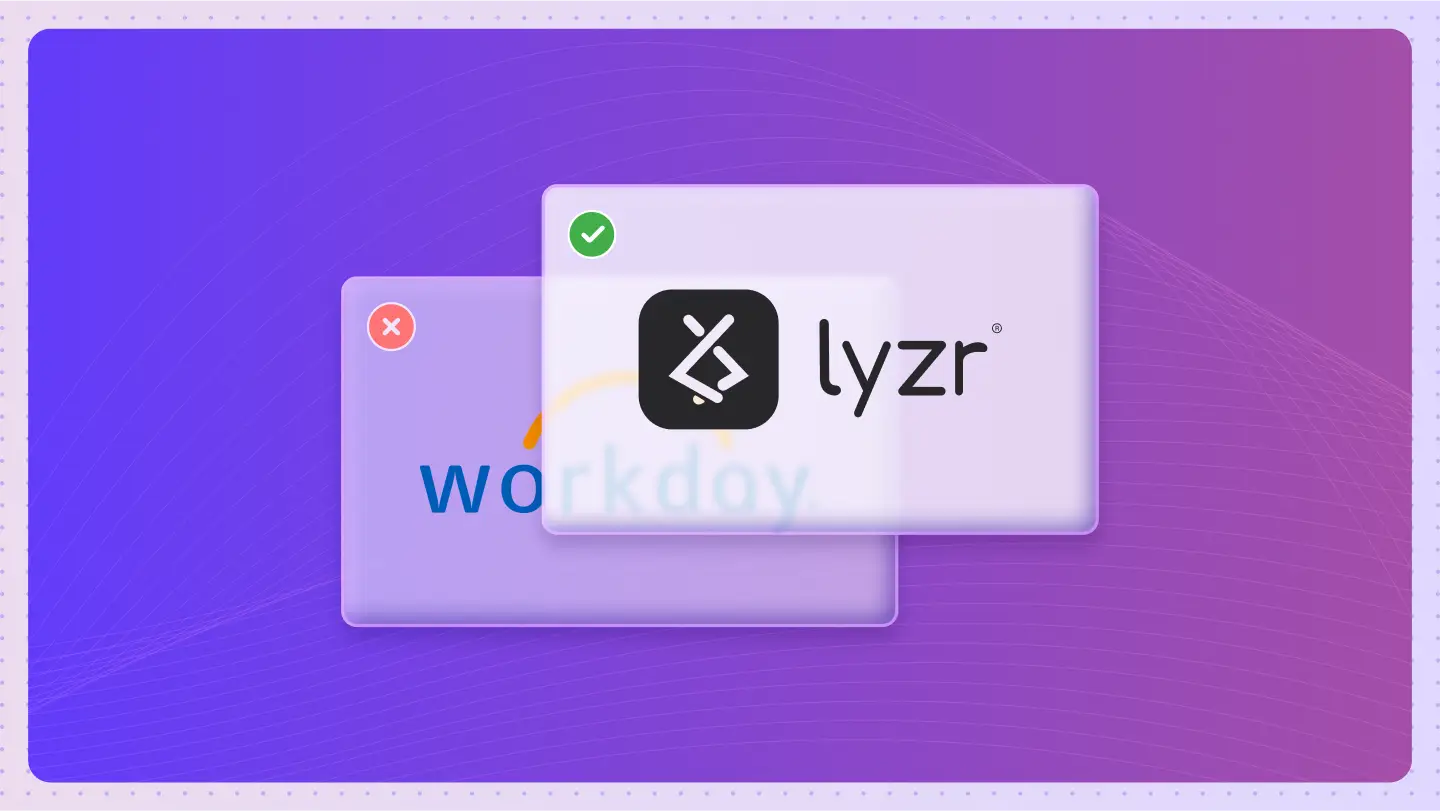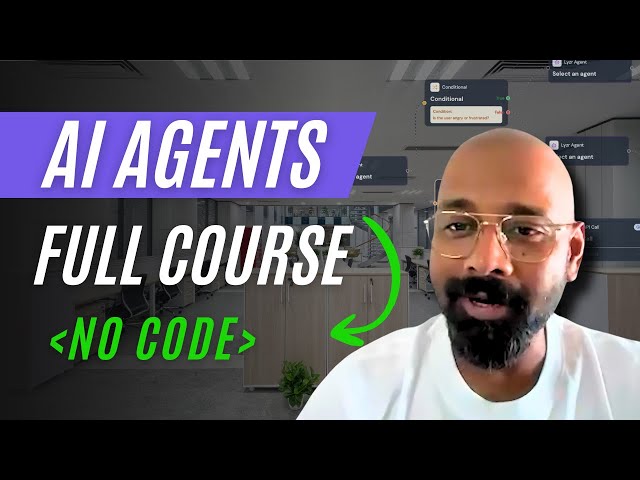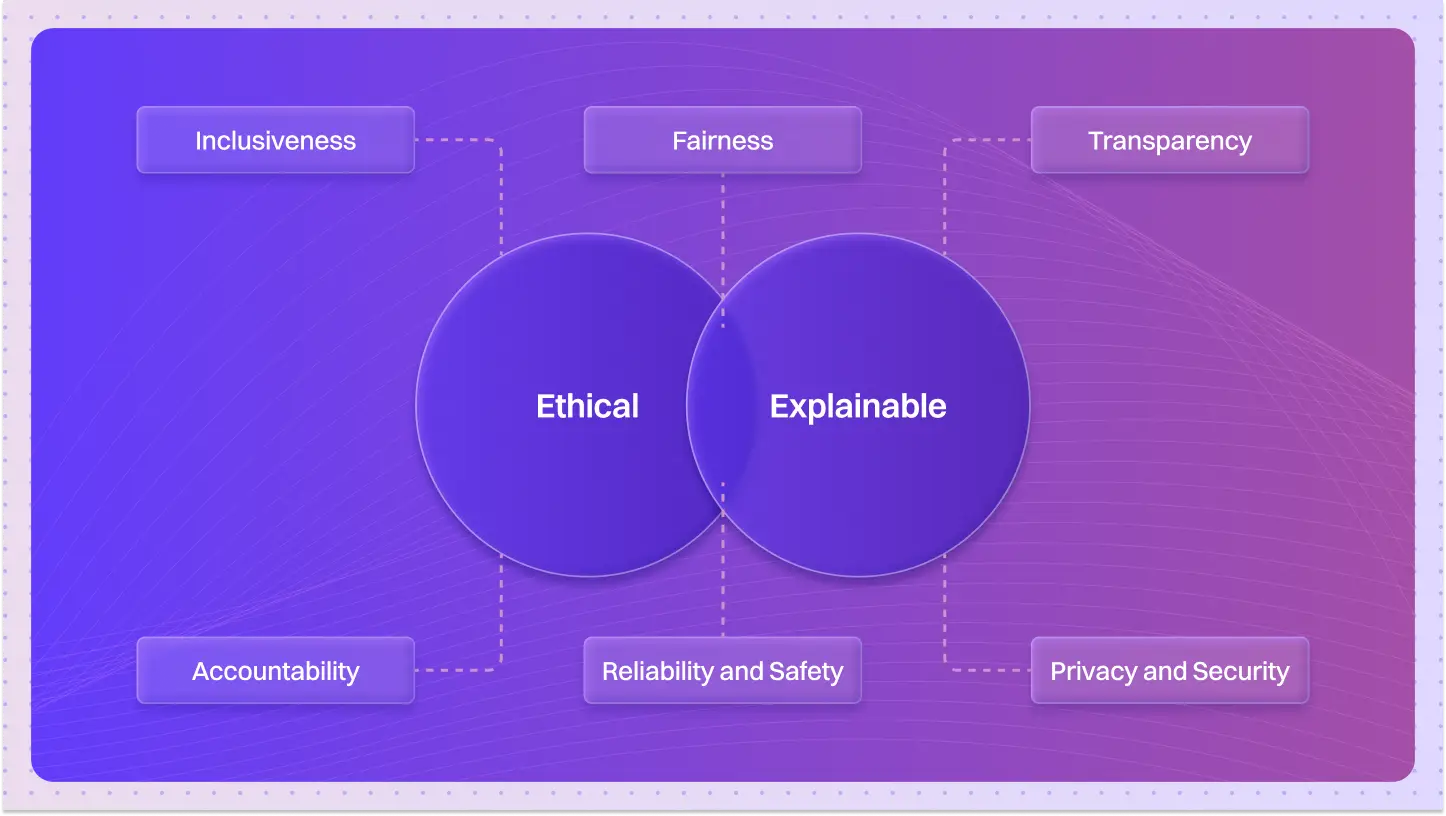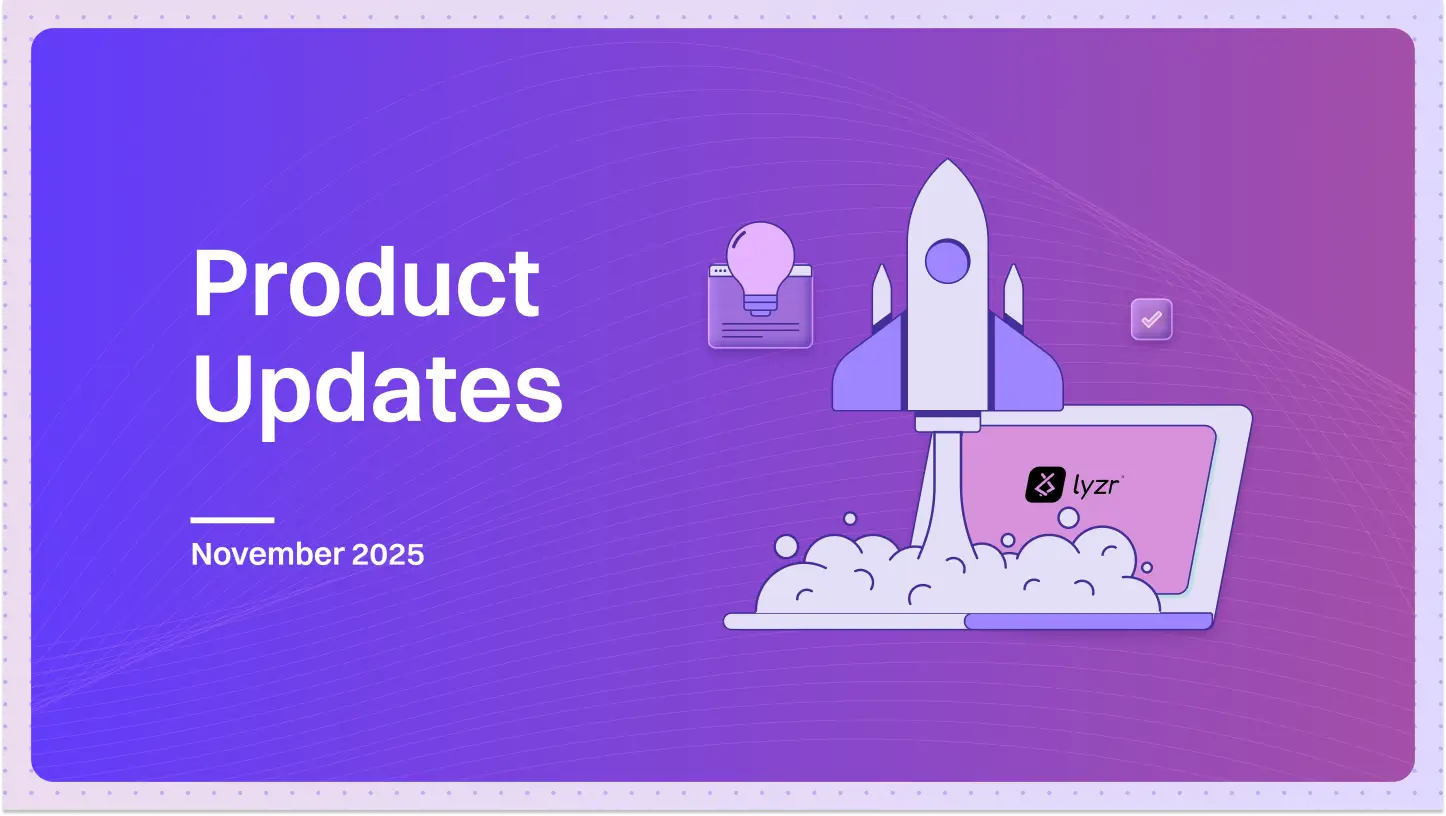What is Few-Shot Learning?
Few-shot learning is a machine learning approach that allows models to learn from a very small amount of training data. This technique is beneficial for rapid model training as it enables effective learning even when data is scarce, making it ideal for situations where obtaining large datasets is impractical.
How does Few-Shot Learning Operate or Function?
Few-shot learning (FSL) is a powerful approach in machine learning that allows models to learn from only a handful of training examples. This technique is particularly useful in scenarios where data collection is expensive or time-consuming. Here’s how few-shot learning operates:
- Learning from Minimal Data: FSL leverages prior knowledge from related tasks to generalize from very few examples. It often uses meta-learning strategies to optimize performance on new tasks with limited data.
- Rapid Model Training: By using few-shot learning, models can be trained quickly, allowing for faster deployment and iteration. This is especially beneficial in dynamic environments where data requirements change frequently.
- Key Strategies: Effective few-shot learning relies on several strategies, such as:
- Transfer Learning: Utilizing pre-trained models as a starting point.
- Data Augmentation: Generating synthetic data to enhance the learning process.
- Prototypical Networks: Creating embeddings that represent classes based on few examples.
In summary, few-shot learning enables efficient model training with minimal data while maintaining high accuracy through innovative techniques.
Common Uses and Applications of Few-Shot Learning
Few-shot learning is a groundbreaking technique in machine learning that allows models to learn from a limited amount of data. This capability is particularly beneficial in scenarios where data is scarce or costly to obtain. Here are some key applications:
- Image Classification: Few-shot learning can enhance image classification tasks by enabling models to recognize new categories with just a few examples.
- Natural Language Processing: In NLP, it facilitates tasks like sentiment analysis or named entity recognition with minimal training data.
- Medical Diagnosis: It aids in developing diagnostic models where acquiring data is challenging, allowing for faster training with fewer samples.
- Robotics: Robots can learn new tasks quickly with few-shot learning, adapting to novel environments efficiently.
- Personalized Recommendations: It helps in tailoring recommendations based on limited user interactions.
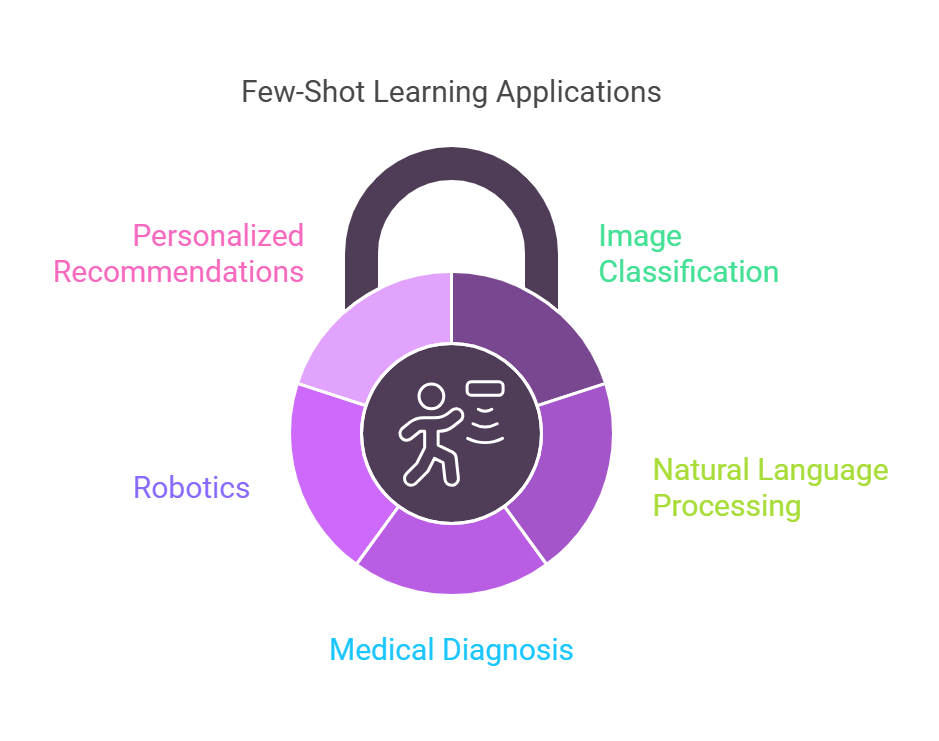
Overall, few-shot learning presents a powerful approach to overcoming data limitations across various domains.
What are the Advantages of Few-Shot Learning?
Few-Shot Learning (FSL) techniques empower models to learn from minimal data, providing significant advantages in various fields such as AI and machine learning. Here are the key benefits:
- Efficient Data Utilization: FSL allows models to learn effectively from limited labeled data, reducing the need for extensive datasets.
- Rapid Model Training: With fewer examples required, training times decrease, enabling quicker deployment of models.
- Cost-Effective: Less data collection and labeling lead to lower operational costs, making it budget-friendly for projects.
- Enhanced Generalization: FSL improves the ability of models to generalize from few examples to unseen data, increasing robustness.
- Adaptability: Models can quickly adapt to new tasks or domains with minimal additional data, enhancing versatility.
Overall, Few-Shot Learning is a powerful approach that streamlines the learning process, making it invaluable for AI researchers, machine learning engineers, and data scientists.
Are there any Drawbacks or Limitations Associated with Few-Shot Learning?
While Few-Shot Learning offers many benefits, it also has limitations such as:
1. Data Dependency: Few-Shot Learning heavily relies on the quality of the few samples available. Poor-quality data can lead to inaccurate model predictions.
2. Model Complexity: Implementing Few-Shot Learning can require complex algorithms, which may not be straightforward for every application.
3. Generalization Issues: The model may struggle to generalize to new, unseen data if the few examples are not representative of the broader dataset.
These challenges can impact the reliability and robustness of the models trained using Few-Shot Learning.
Can You Provide Real-life Examples of Few-Shot Learning in Action?
For example, Few-Shot Learning is used by Google in their image recognition models to identify objects with very few labeled examples. This demonstrates the capability of Few-Shot Learning to adapt quickly in scenarios where data availability is limited, showcasing its effectiveness in practical applications.
How does Few-Shot Learning Compare to Similar Concepts or Technologies?
Compared to traditional supervised learning, Few-Shot Learning differs in its approach to training models with minimal data points. While traditional learning focuses on large datasets for effective training, Few-Shot Learning is designed to perform well even with a few examples, making it more suitable for cases with limited labeled data.
What are the Expected Future Trends for Few-Shot Learning?
In the future, Few-Shot Learning is expected to evolve by integrating with other machine learning techniques, such as transfer learning and meta-learning. These changes could lead to improved adaptability of models across various domains, as well as advancements in their ability to learn from diverse data types.
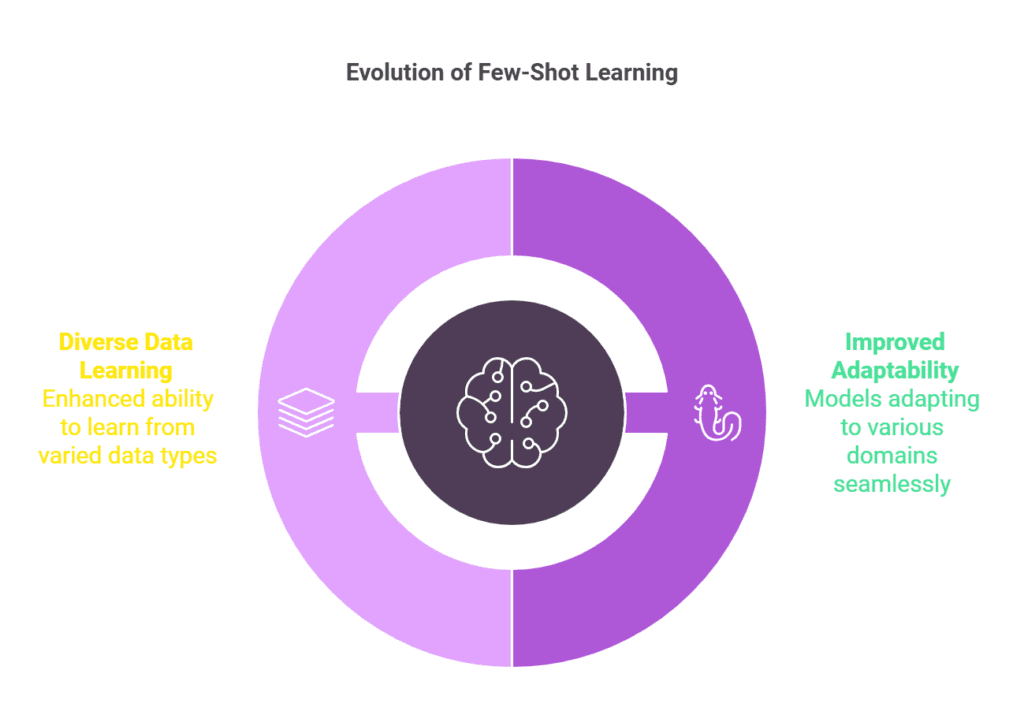
What are the Best Practices for Using Few-Shot Learning Effectively?
To use Few-Shot Learning effectively, it is recommended to:
1. Curate Quality Data: Focus on obtaining high-quality examples to ensure better model performance.
2. Leverage Pre-Trained Models: Utilize models that have been pre-trained on larger datasets to improve learning outcomes with few examples.
3. Experiment with Different Algorithms: Test various Few-Shot Learning techniques to find the best fit for your specific problem.
Following these guidelines ensures that you maximize the potential of Few-Shot Learning.
Are there Detailed Case Studies Demonstrating the Successful Implementation of Few-Shot Learning?
One notable case study is by Facebook AI Research, where Few-Shot Learning was applied to improve facial recognition systems. By using only a few images per individual, they achieved high accuracy levels in identifying faces. This implementation resulted in a significant reduction in the amount of data needed for training, while still maintaining robust performance in real-world applications.
What Related Terms are Important to Understand along with Few-Shot Learning?
Related Terms: Related terms include Meta-Learning and Transfer Learning, which are crucial for understanding Few-Shot Learning because they involve techniques that help models adapt to new tasks or domains quickly, thereby complementing the principles of Few-Shot Learning.
What are the Step-by-step Instructions for Implementing Few-Shot Learning?
To implement Few-Shot Learning, follow these steps:
1. Define Your Problem: Clearly identify the task and the type of data you have.
2. Gather Data Samples: Collect a small but representative set of labeled examples.
3. Choose a Few-Shot Learning Algorithm: Select an appropriate algorithm based on your specific needs.
4. Train the Model: Use the few examples to train the model, possibly with a pre-trained base.
5. Evaluate and Fine-Tune: Assess the model’s performance and adjust as necessary.
These steps ensure a structured approach to implementing Few-Shot Learning.
Frequently Asked Questions
Q: What is few-shot learning?
A: Few-shot learning is a machine learning approach that enables models to learn from a very small number of training examples.
1: It reduces the dependency on large datasets,
2: It allows for quicker model training.
Q: What are the benefits of using few-shot learning?
A: Few-shot learning offers several advantages.
1: It allows models to generalize better from limited data,
2: It accelerates the training process, reducing time and resource requirements.
Q: In what scenarios is few-shot learning particularly useful?
A: Few-shot learning is beneficial in various situations.
1: When collecting large datasets is impractical or costly,
2: In domains where data is scarce, such as medical imaging.
Q: What strategies can improve few-shot learning performance?
A: There are key strategies to enhance few-shot learning.
1: Utilize data augmentation to artificially expand the training set,
2: Implement meta-learning techniques to improve model learning.
Q: How does few-shot learning compare to traditional machine learning?
A: Few-shot learning differs from traditional methods in significant ways.
1: It requires fewer training examples to achieve comparable performance,
2: It focuses on rapid adaptation to new tasks.
Q: Can few-shot learning be applied to all types of tasks?
A: Few-shot learning is versatile but not universally applicable.
1: It works well for classification and object detection tasks,
2: Its effectiveness may decrease in highly complex tasks without sufficient data.
Q: What industries can benefit from few-shot learning?
A: Many industries can leverage few-shot learning.
1: Healthcare can improve diagnostic models,
2: Retail can enhance customer personalization with limited data.



